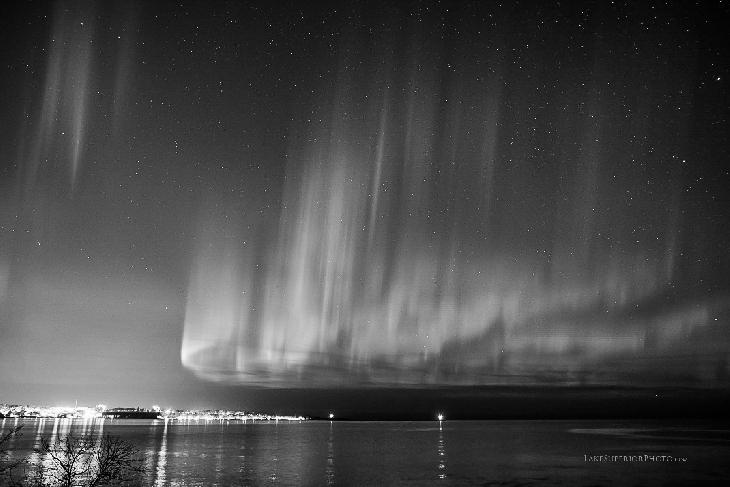Earthly phenomenons are a landscape photographer’s moment to cherish, admire and capture. As the days wind down and nights grow long, spotting a dancing Aurora Borealis becomes less of a dream and more of a reality.
“I think we’re probably in one of the best spots in the lower 48 states to see the lights because of Lake Superior. Most of the Aurora occurs low on the horizon because we are so far south in latitude,” Shawn Malone,
co-owner of Lake Superior Photo said.
Sighting the Aurora Borealis is rare for most of the world living away from the Northern or Southern hemisphere. Undoubtedly beautiful, the Aurora can be spotted across Lake Superior in Marquette on given evenings.
“Where we are, we are fortunate to witness the Aurora this low in latitude because we have the gift of Lake Superior. Since we’re on the south shore, we’re looking directly north. It provides us with completely dark sky all the way around the horizon with no obstructions. This eliminates 50 percent of the battle between seeing the Aurora at our latitude,” Malone said.
Malone explained that having the Space Weather Aurora Alerts set to notify your phone for strong activity is a must for planning a shoot, adding on a scale of 0-9, a visible Aurora can be seen at 1-2 with some light hazy lights. A 3-4 rating will provide the viewer with a lot of action for the naked eye. While the Aurora is significantly enhanced with the use of a camera and editing.
“The Aurora is unique, it’s a light show that’s created from events on the sun. You never know what’s going to happen,” Malone said.
The Aurora can be difficult to spot, let alone photographed, so have a planned out area to photograph before the lights even come out. Knowing a ‘go-to-spot’ is essential as you’ll have a very limited amount of time to shoot the spotty lights with elements like cloud coverage.
With a composition in mind, in an area that you’ve hopefully shot before, have your camera set up on a tripod, use a shutter release cable or timer to avoid shake, and have your fastest wide angle lens set to the lowest f-stop (f/) capable, ready to shoot when the time comes.
“I wouldn’t get hung up on the marketing push to buy the most expensive camera for the lowest light or whatever. Take what you have, if you can get a wide-angle lens, that would be key,” Malone said.
For your settings, have your ISO, the feature that adjusts light sensitivity, to 1600. Malone recommends keeping the ISO as low as possible for less grain. Set your shutter speed to 10-15 seconds. By having a slower shutter speed, the Aurora will appear hazier than a faster speed which will pick up more detail in the light patterns.
“Most DSLR are very sensitive and can do a good job in low light. So if you can get 1600 or 3200 ISO, that’s a good start. Get on manual, focus on infinity, keep it wide open and you’re good to go,” Malone said.
From here on out, it’s all about your eye and what you think looks best. Depending on your camera equipment and the given night, the right setting will be found by adjusting until you’re pleased, which will take some trial and error.
At your location, if you have an object like a tree or rock in the foreground of the frame and you’d like to keep everything in focus, use a light to shine on the object in focus. Then, take another photo with your focus on infinity with the exact same settings and frame. Later in Photoshop, layer the two photos and get both the foreground and background in focus by using the blend tool.
“We do private workshops if someone wants to learn how to do this — it’s a great gift idea for the holidays. We also have a really cool workshop on Feb. 3 and 6, 2019. Our photography package includes lodging at Chamberlin’s Old Forest Inn, a half-day dog sledding adventure at Nature’s Kennel where you learn to drive your own dog team, snowshoeing at Tahquamenon Falls State Park, a guided trip to the ice caves in Munising and personalized photography instruction throughout your entire trip,” Malone said.
The magic of the moment will have your heart beating fast and eyes dialated with joy. Being prepared to witness this dream-like scene will make the difference in your experience, so take the time and imagine what shot you’ll take when the time comes.























